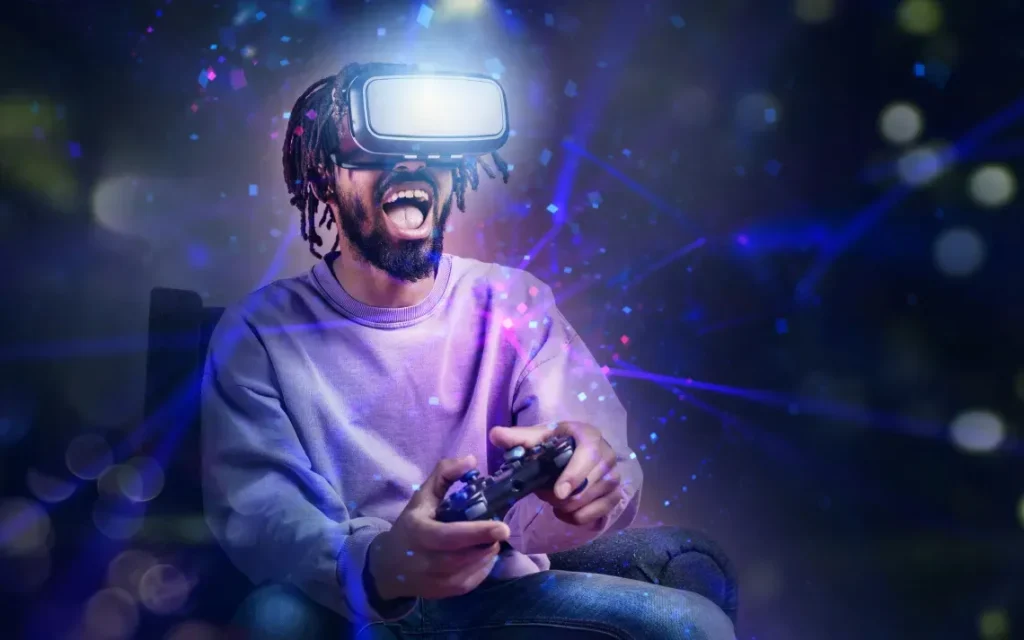VR and AR gaming are redefining how we play, learn, and connect by blending digital imagination with the physical world. From early explorations to today’s portable systems, developers are crafting experiences that feel both magical and tangible. As immersive gaming experiences become more accessible, players are invited to explore new narratives, social interactions, and real-world spaces reimagined as game environments. This hybrid approach pairs cutting-edge headsets, spatial audio, and intuitive input with thoughtful design to minimize fatigue while maximizing presence. In the pages that follow, we’ll examine the technology, design strategies for true immersion, and the evolving landscape of cross-reality play.
Beyond the terminology, the essence is spatial computing that blends digital content with our physical surroundings. Augmented reality games overlay interactive graphics onto real environments, while mixed reality gaming blends virtual objects with real-world physics to support natural interactions. These approaches rely on devices with spatial sensing, efficient on-device processing, and low-latency interaction to preserve a sense of presence. As hardware advances, audiences expand to include educators, trainers, and casual players who seek meaningful, hands-on experiences beyond traditional screens.
VR and AR Gaming: Redefining Immersion, Presence, and Social Play
VR and AR gaming fuse cutting-edge display technology with precise motion tracking and spatial audio to deliver immersive gaming experiences that feel both magical and tangible. By pairing virtual reality gaming’s deep sense of presence with augmented reality games that anchor digital content in the real world, developers create experiences that span fantastical realms and everyday spaces, inviting players to interact with stories in three-dimensional space.
Within this convergence, immersive gaming experiences emerge as players explore hybrid environments where physical space and digital elements coexist. Mixed reality gaming enables narratives to unfold around the player, while social features leverage gestures, gaze, and shared virtual spaces to deepen collaboration and competition. As consumer hardware becomes more accessible, the line between playing and living in the game world grows thinner, hinting at the future of VR and AR in gaming.
Designer’s Guide to Crafting Immersive Experiences in VR/AR: Techniques, Comfort, and Accessibility
Designers optimize immersion through spatial storytelling, intuitive interaction, and believable feedback in VR and AR contexts. World-building rewards curiosity, and motion controls paired with haptics and carefully timed audio-visual cues help players feel truly present in the scene. When the design aligns with user expectations—from casting a spell with a natural gesture to manipulating virtual objects with accurate hand tracking—the result is an authentic sense of immersion across virtual reality gaming and augmented reality games.
Accessibility and comfort are essential to broad adoption. Designers address motion sickness with comfort-oriented locomotion options, teleportation, and adjustable acceleration, while offering scalable difficulty, alternative control schemes, and inclusive settings. As cloud-based streaming and edge computing enable higher fidelity on modest hardware, the future of VR and AR in gaming becomes more affordable, expanding immersive experiences and cross-reality play across devices and locations, including classrooms and public spaces within mixed reality gaming contexts.
Frequently Asked Questions
How are virtual reality gaming and augmented reality games shaping immersive gaming experiences and social play?
VR and AR gaming are redefining how players experience presence, interaction, and social engagement by blending immersive simulations with real-world contexts. Virtual reality gaming uses head-mounted displays, precise tracking, spatial audio, and haptics to create a convincing sense of being inside a game world, while augmented reality games overlay digital content onto real environments, turning everyday spaces into gameplay arenas. Together, immersive gaming experiences enable new narratives and collaborative play across real and virtual spaces, including cross-reality experiences that mix VR and AR elements.
What design considerations define the future of VR and AR in gaming, including mixed reality gaming and cross-platform play?
Designing for the future of VR and AR in gaming requires focusing on presence as the core driver of immersion: coherent space, intuitive interaction, and believable feedback. Key considerations include comfortable locomotion, accurate motion tracking, cross-platform compatibility, accessibility, and scalable performance across standalone, PC, and mobile devices, as well as leveraging mixed reality gaming and cloud-based services. As hardware evolves—lighter headsets, higher resolutions, eye-tracking—and software advances like AI-driven content, the industry can deliver more modular, social, and personalized experiences.
| Topic | Key Points |
|---|---|
| What VR and AR gaming is |
|
| The technology behind VR and AR gaming |
|
| Designing for immersion in VR and AR gaming |
|
| Real-world examples and trends in immersive experiences |
|
| The social dimension and cross-platform play |
|
| Challenges and considerations in VR and AR gaming |
|
| The broader impact: training, education, and entertainment |
|
| The future of VR and AR in gaming |
|
Summary
Conclusion: VR and AR gaming represents a bold redefinition of play, where immersion, social interaction, and cross-reality design converge to create experiences that feel both magical and practical. The shift from traditional screens to immersive gameplay is accelerating as hardware improves and developers innovate with new storytelling, interactions, and shared spaces. As technology becomes more accessible and communities grow, VR and AR gaming holds the promise of meaningful, entertaining, and transformative experiences that reshape how we learn, create, and connect—whether exploring distant fantasy realms in VR or overlaying digital art onto daily life with AR.

